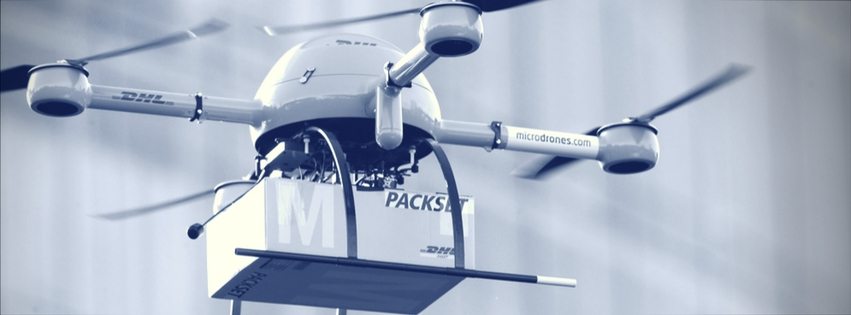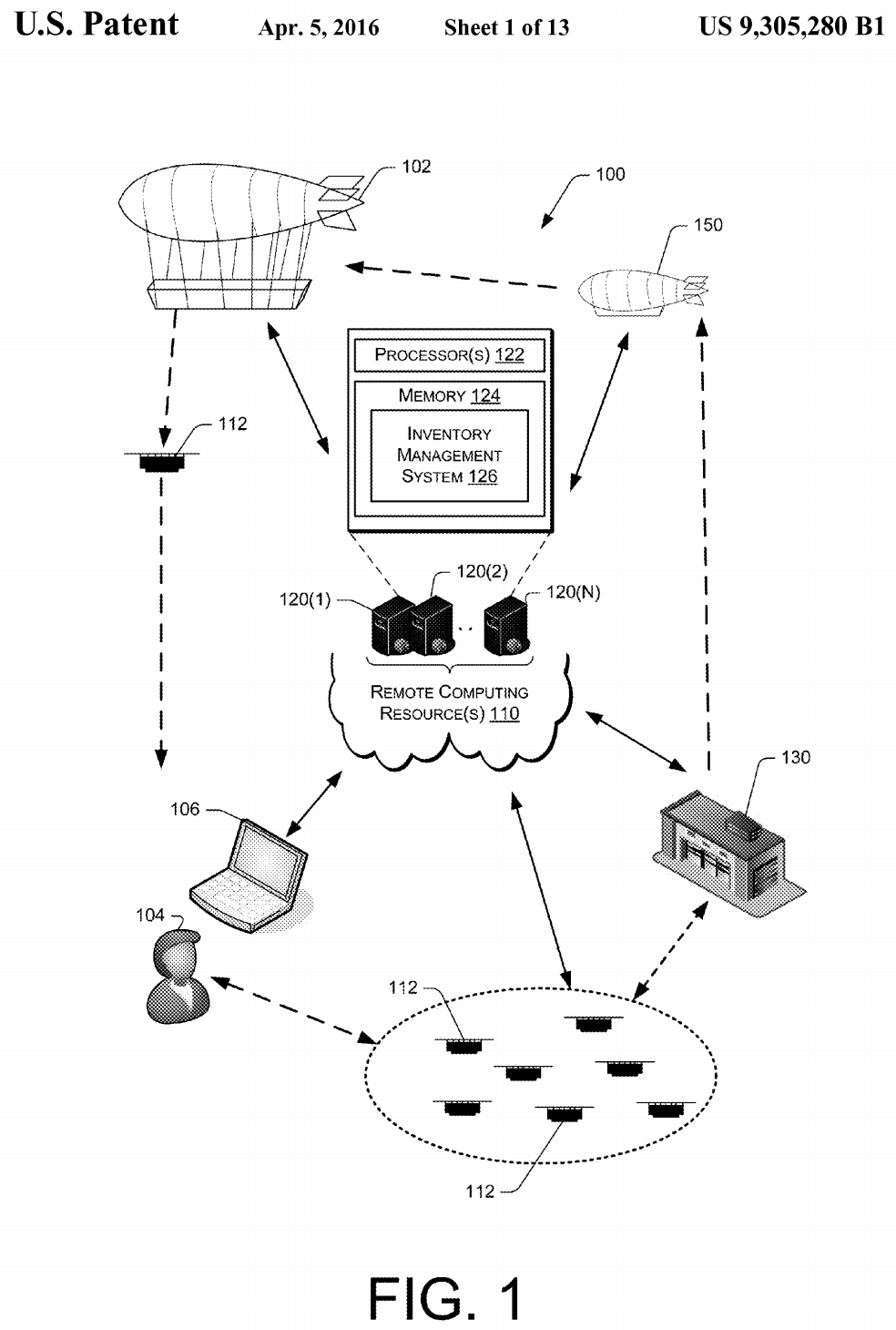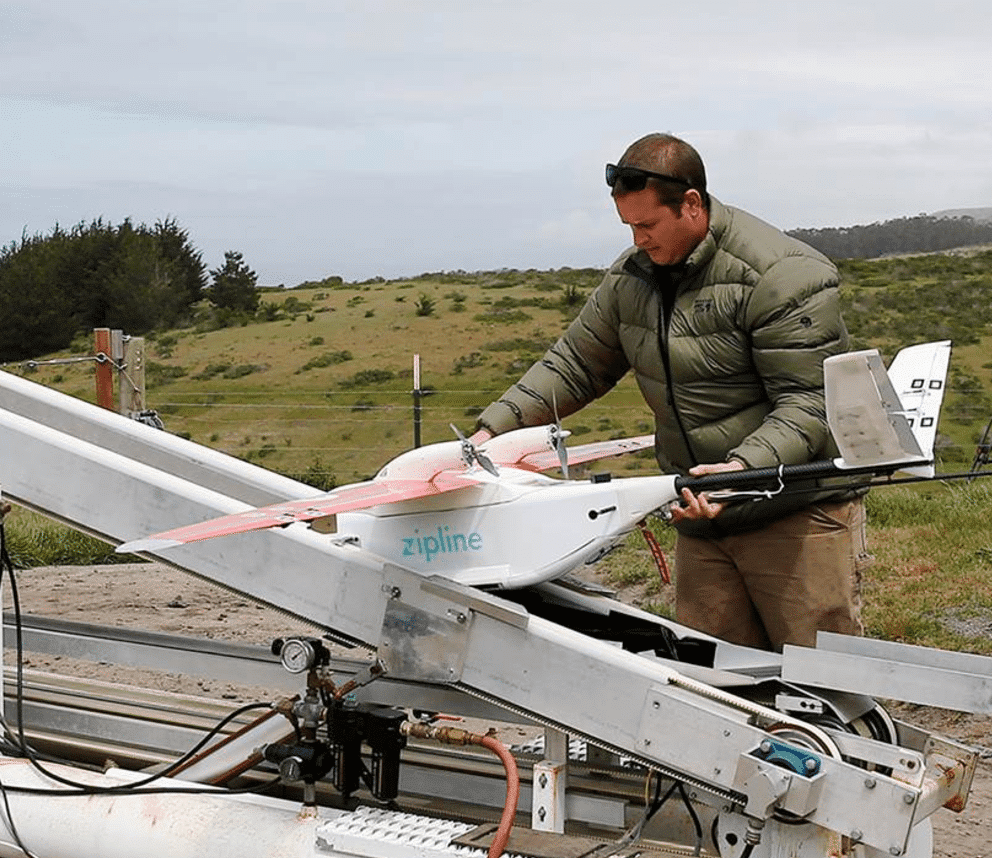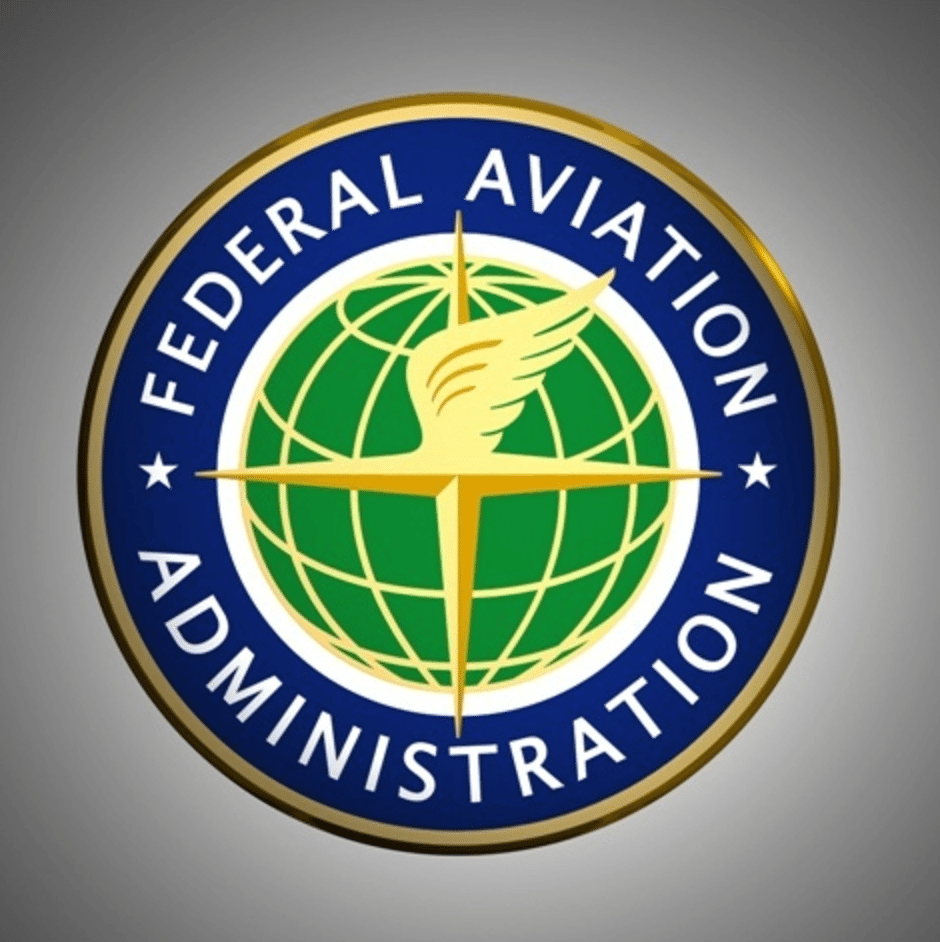
The precipitous drop in the price of drones and the intelligent guidance systems that power them has created a broad range of commercial applications (we covered industrial drone applications in a previous article). One use-case that has captured popular attention and large scale investment from a variety of retailers and start ups is autonomous delivery vehicles.
The goal is to automatically and cheaply deliver everything from pizza to toothpaste within minutes of receiving an order. When, if, and how the technology will ever be deployed on a worldwide commercial scale depends on overcoming technical and legal challenges which we outline in this article.
Several companies have proven that aerial drones are capable of autonomous delivery under specific conditions – while others are looking at tiny, wheeled robots that operate almost like mini self-driving cars. In this article, we’ll aim to answer the following three questions that business leaders are asking:
- What is the business opportunity and potential efficiencies of autonomous delivery?
- What are delivery drones capable of today?
- What could hold delivery drone technologies back from being widely adopted?
The driving force behind the investment in autonomous delivery this is the economics of logistics, particularly last-mile delivery. Despite significant challenges in those areas (and unique legal concerns), the business opportunity of delivery drones is too good for many cutting-edge retailers to pass up.
We’ll begin by examining the possible economic incentives behind the technology:
The Business Opportunity of Drones Delivery
The reason numerous delivery companies, restaurant chains, tech companies, and retailers are involved in autonomous delivery development is not simply because of improved convenience or the coolness factor. If the technology can be made to work safely and reliably at scale, it could produce significant savings for companies that rely on traditional package delivery.
Starship Technology believes it will eventually be able to offer on-demand delivery for $1 using its small, wheeled delivery robots that travel on city sidewalks. Similarly, an analysis by ARK Invest concluded that Amazon Prime Air or similar services once fully developed could potentially deliver five-pound packages in under half an hour for only about $0.88 a delivery. According to Jeff Bezos, 86 percent of items ordered on Amazon weigh five pounds or less, which is what is current the maximum Amazon’s delivery drones are capable of carrying. At the moment, a small flat-rate box costs $6.45 to send via commercial priority mail and takes at least a day to arrive.

A better point of comparison, though, is looking at what it currently costs to have a human provide a quick, short-distance delivery via a food delivery app. These are the services which would mostly directly compete with or potentially be replaced by autonomous delivery. For example, UberEats drivers in London receive a minimum of £5.33 ($6.95) per delivery, while a Grubhub driver makes around $7.85 per trip.
(For more examples of grounded robots in retail settings, see our full article called “Robots in Retail”.)
Those figures do not include what these services also charge the restaurants. It is theoretically possible drones would not only deliver items faster, but at only a fraction of what it costs to have it sent by regular human delivery drivers. Presumably, if delivery can be made faster and dramatically cheaper, more people would order goods and food online.
The possibility for autonomous drones if the legal and technical hurdles are overcome could take many forms. Theoretically, the technology could do more than just replace current human delivery drivers, errand runners, and short distance couriers by having a few drones waiting at every restaurant and convenience store.
The small size and potentially low operating cost of drones means the whole distribution network could be redesigned to gain increased efficiencies and lower costs for delivery, which in turn should drive even more online ordering. It is not yet known how drone delivery could reshape logistical networks, but recent patent files and tests provide examples of what might be possible.
Amazon is looking at the idea of a flying warehouse that launches drones from a blimp or a beehive-like distribution center, with drones constantly coming and going.
Another possible system tested by UPS is deploying drones from trucks. The test was for a single drone that would augment a human driver, with the truck effectively serving as a mini distribution center on wheels full of drones.
What is Currently Possible with Delivery Drones
Autonomous delivery is currently feasible, at least under very specific conditions. Multiple companies have already performed public tests and even limited deployments of delivery vehicles in select markets.
However, there is a big difference between a few closely monitored drones flying predetermined routes during the day under ideal weather conditions and potentially hundreds of drones all operating in the same general area in a variety of conditions.
It’s important to note that these applications are in “pilot” phases, and that regular adoption of drone delivery will involve solving significant technical and legal challenges. Regardless, it’s useful for business leaders to have a sense of the direction of the technology, and of the current initiatives put underway by major industry leaders. The list we’ve put together below is a solid representative set of such current drone delivery initiatives:
1 – Flirtey with 7-11
The first FAA-approved drone delivery actually took place back in 2015. The remotely piloted drone start-up Flirtey delivered pharmaceuticals and other medical supplies to a free medical clinic in Wise County, Virginia. Flirtey also performed the first fully autonomous FAA-approved drone delivery to an urban setting in 2016 in Hawthorne, Nevada. Without needing the backup human pilots to step in, the drone was able to fly a pre-determined delivery route to drop off a package including bottled water, emergency food and a first aid kit.
This was soon followed by the company conducting 77 deliveries to actual customer homes for 7-Eleven in Reno, Nevada in late 2016. A limited number of customers were able to order 7-Eleven goods on their phone, and a drone brought them to their house. The proof-of-concept required authorization from the FAA, as well as employees keeping the drones in line of sight to take over if any problems developed
2 – Amazon
Amazon has been one of the earliest and most aggressive innovators in the drone delivery space since Jeff Bezos unveiled the idea of Amazon Prime Air in 2013. This is not surprising given how important delivery costs are to Amazon’s whole online retailer model.
Last year Amazon began limited private testing of autonomous drone delivery in Cambridgeshire and completed their first delivery to a customer in late 2016. An extremely small number of test customers in the area can order a limited number of items that weigh up to 5 pounds, which can automatically be delivered in less than 30 minutes. At the moment, though, they can only operate during the day under ideal flying weather. The plan to is expand testing in the near future. Amazon has focused it early testing in the UK where local regulators have taken more a drone-friendly position than the FAA.
This puts Amazon roughly on schedule with Jeff Bezos’ predictions back when he announced Prime Air in 2013. At the time he thought autonomous drone deliveries would be “four, five years” away.
3 – Alphabet with Chipotle
Alphabet’s Project Wing teamed up with Chipotle to conduct their own testing/PR display in September 2016 at Virginia Tech. Their drones brought burritos to hungry students, but only students who traveled to an assigned testing ground in an open field that was incredibly close to to the food truck preparing the meals at the launch point. After a short predetermined and closely monitored flight, the autonomous drones hovered while the food was slowly lowered to the customers below.
Recently Project Wing has begun focusing on Canberra, Australia as a prime test location for their services. The friendly regulators in Australia combined with the surrounding area’s low population density, along with its large property lots with plenty of room for deliveries, makes it an ideal place for testing actual deliveries to customers.
James Ryan Burgess, the Co-Lead of Project Wing, claims that within a few years, “companies are likely to have fleets with thousands of UAS in the air at any one time.”
4 – UPS and Zipline

UPS has been testing and demonstrating the potential value of drone delivery for saving lives. Last year it performed a mock delivery of emergency medicine to Children’s Island three miles off the Atlantic coast. The move was only a test, but the general idea is that high value, life-saving applications might make the most sense in the short term.
UPS teamed up with the startup Zipline to launch the world’s first drone medical delivery network, highlighting this use case. The Zipline drones can deliver blood quickly to remote locations throughout Rwanda, where roads are not always reliable. Relatively low air traffic, a looser regulatory environment, and the high value of the cargo makes it a good location for testing the technology. The system has been up and running for almost a year in both good and bad weather.
In the United States, UPS tested a drone launched from the top of a UPS truck. The idea is to eventually reduce time spent on deliveries along rural areas. Instead of driving miles of back roads, a drone could hit the most out-of-reach places while the truck does other deliveries.
5 – Starship for Domino’s, 1-800 Flowers, Hermes, Tesco, etc…
This is the approach Starship Technology has taken. Their equipment looks like a high-tech cooler on wheels which moves just a few miles an hour. They don’t have the speed or range of flying drones, but that also means they don’t face many of the same regulatory challenges.
Starship has already teamed up with partners like Swiss Post, Tesco, Hermes, and 1-800 Flowers to test delivers in select cities throughout Europe and the United States. The small vehicles are mostly autonomous, but human drivers are called on to remotely pilot them when they run into a problem. One of their biggest partnerships is with Domino’s to test pizza deliveries in several cities throughout Germany and the Netherlands.
6 – FedEx
Unlike UPS, FedEx is less optimistic about the future of aerial drone delivery. Rob Carter, FedEx’s chief information officer, told MIT Technology Review that safety and regulatory concerns will likely prevent them from really being deployed in cities. Not displaying some of the outright enthusiasm of other delivery and retail giants, FedEx seems to be “wading cautiously” into the world of automated delivery. While he can picture limited uses for unmanned aerial vehicles (UAVs), FedEx is betting the future of automated delivery is small, wheeled vehicles.
Conclusion and Possible Deterrents to Drone Delivery Adoption

Aerial drone delivery is possible. Highly controlled tests and even specific real-world deployments for medical supplies in Rwanda have proven it can be done.
The big question is whether it’s economically viable and scalable. A few drones traveling on ideal routes with ideal conditions in urban areas is one thing. Yet for drone delivery to be transformative, you need hundreds moving at the same time under a variety of conditions.
The big technical challenge is safety, and getting all the drones working in unison. Any drone flying over a highly populated area needs to be able to handle everything from trees to kites to freak events like an eagle dropping a fish it just caught.
To keep all of these potential drones flying safely in tandem, NASA, the FAA, and a whole host of industry partners are working on a drone air traffic control system. Two big steps that need to be overcome are are:
- By 2019, NASA wants to finish the research necessary for such a system so the FAA can work on implementation. So far, the testing with industry partners like Project Wing is in relatively early stages.
- 2020 is the earliest one could reasonably expect significant deployment in the United States if the testing goes well. It might be more realistic to look around 2023 for regular drone deliveries to homes- and this will likely begin in a small number of “pilot” cities or towns.
- If drone delivery is adopted safely at scale in other nations (such as China, Australia, New Zealand, Britain, etc), we can expect regulatory processes to speed up in the USA.
Only once UAVs overcome these technical hurdles is there even the possibility that regulation will change. The FAA currently requires an operator for each drone, and the drone must remain in the operator’s line of sight — making most applications of drone delivery impossible. This is partly why American companies are testing in other countries.
The possibility of political objections also can’t be ignored. NASA researchers concluded that people find the noise made by drones to be particularly annoying. People may eventually get used to the noise or accept it as a necessary evil to improve their lives – but they might not.
Among the companies investing big in drone delivery, there is a belief that the technology could overcome all of these hurdles and see widespread use in just a few years. There are, however, experts in the delivery and logistics business who question whether flying drones will ever become widely used and think autonomous ground-based delivery robots are a more likely path forward. When it comes to which technology is actually being deployed, the latter is currently closer to widespread commercial use.
Given the limited range ground-based delivery robots, if they do get widely deployed in the near future business most likely to benefit are those will dense network of stories or locations in cities.
Continue to check back to our “Robotics” category for continued updates on drone applications.
Image credit: DHL







